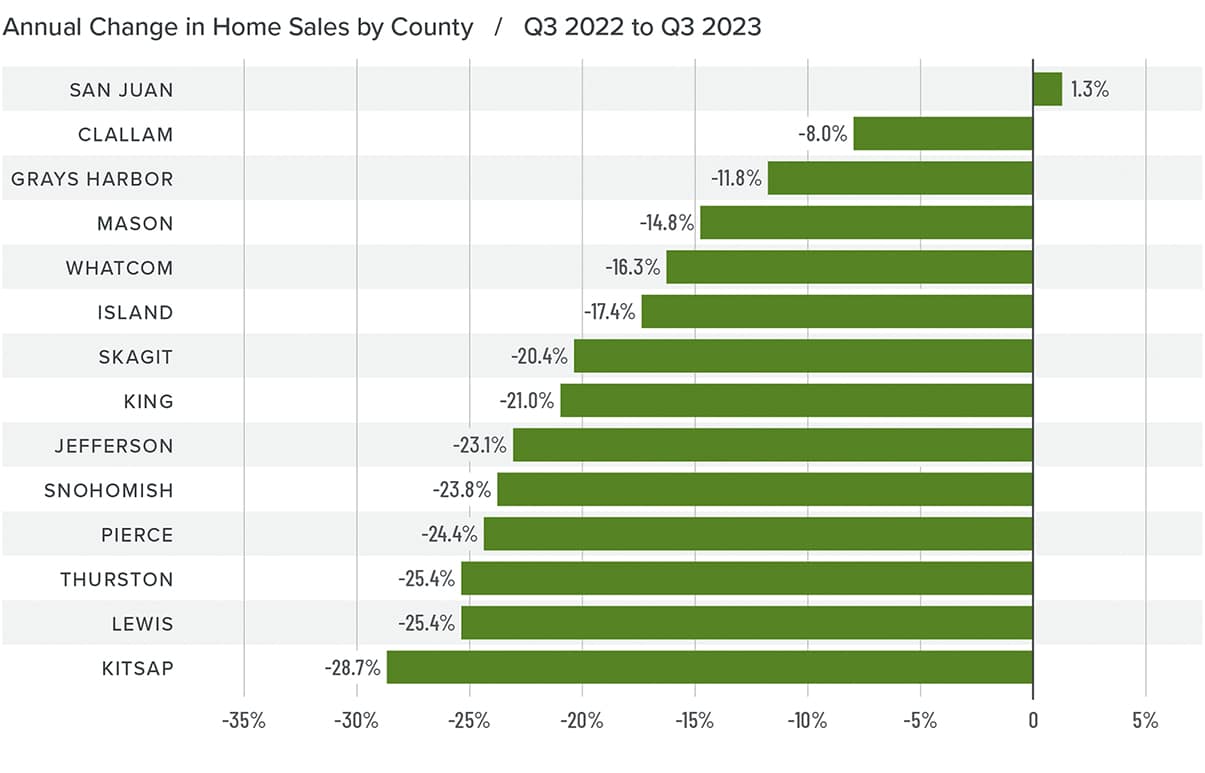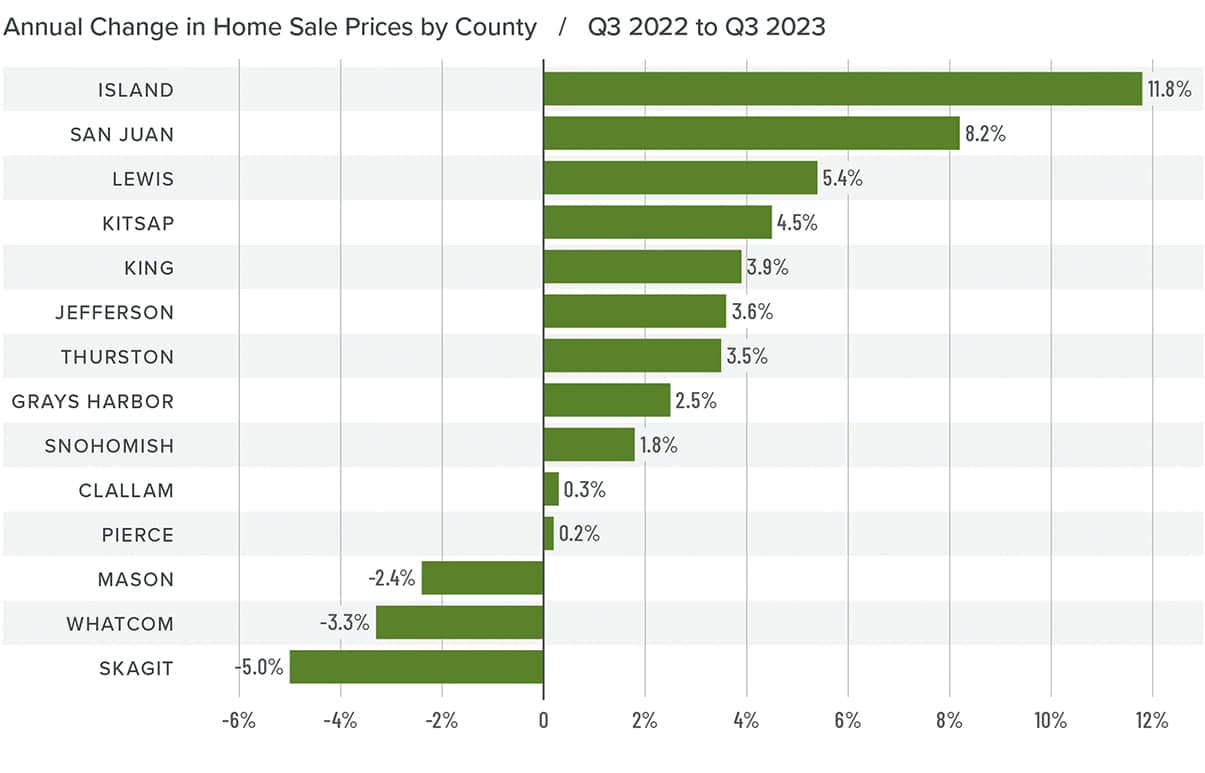Windermere Real Estate Video Reports
NEW – U.S. Housing Market 2023: Updated Analysis
Analysis of the U.S. housing market in 2023, using data released by The National Association of REALTORS® on listing activity, home sales, price growth, and more.
What’s Happening With Home Prices?
An updated look at U.S. home prices and housing affordability by examining two key reports from ATTOM Data Solutions and the National Association of Home Builders (NAHB).
2023 Home Prices, U.S. Demographics, and More
This video, posted August 2, 2023, includes analysis Harvard University’s latest “State of the Nation’s Housing” report.
Mortgage Rate Predictions and Misconceptions | April 24, 2023
Watch Video
Will Banking Turmoil Impact Housing | March 23, 2023
What do the recent failures of Silicon Valley Bank and Signature Bank mean for the U.S. economy and housing market?
Watch Video
Renting vs. Buying a Home: The Financial Benefits of Homeownership | February 27, 2023
Is buying a home the financially superior option to renting? Here we detail the wealth-building opportunities and tax benefits that come with homeownership.
Watch Video
Impact of Seattle Tech Layoffs | February 17, 2023
Are the recent Seattle tech industry layoffs cause for panic? I don’t think so.
Watch Video

The following analysis of select counties of the Western Washington real estate market is provided by Windermere Real Estate to assist you with making better-informed real estate decisions. For further information about the housing market in your area, please don’t hesitate to contact me at [email protected] or (206) 307-8881.
REGIONAL ECONOMIC OVERVIEW
The pace of job growth continues to slow in Western Washington, as the region added only 21,907 new positions over the past 12 months. This represented a growth rate of 1.4%, which was the lowest pace of new jobs added since the pandemic ended.
The regional unemployment rate in August was 5.8%, which was marginally below the 6% rate we saw in the same quarter in 2022. A few smaller counties lost jobs over the past 12 months while King County’s employment levels rose a meager .4%, mainly due to job losses in the technology sector. I’ve said before that I’m not convinced that the U.S. is going to enter a recession; I still stand by that theory. Slowing job growth does not necessarily need to be a precursor to a recession, but I expect that we will see lackluster growth until next spring at the earliest.

WESTERN WASHINGTON HOME SALES
❱ In the third quarter of 2023, 14,970 homes sold. This was down 22% from the third quarter of 2022 and 1% lower than in the second quarter of this year.
❱ Sales fell even as the average number of homes for sale increased 29.5% from the second quarter. This is clearly a sign that significantly higher mortgage rates are having an impact on the market.
❱ Sales fell in all counties except San Juan compared to the third quarter of 2022. They were up in 9 of the 14 counties covered in this report compared to the second quarter of 2023. San Juan, Mason, Grays Harbor, and Whatcom counties saw significant increases.
❱ Pending sales fell 6% compared to the second quarter of this year, suggesting that closings in the upcoming quarter may be lackluster unless mortgage rates fall, which I think is highly unlikely.


WESTERN WASHINGTON HOME PRICES
 ❱ Prices rose 2.8% compared to the third quarter of 2022 and were .6% higher than in the second quarter of this year. The average home sale price was $776,205.
❱ Prices rose 2.8% compared to the third quarter of 2022 and were .6% higher than in the second quarter of this year. The average home sale price was $776,205.
❱ Compared to the second quarter of this year, sale prices were higher in all counties except Grays Harbor (-.5%), Kitsap (-1.5%), Clallam (-1.6%), Whatcom (-2.6%), and Skagit (-3%).
❱ Compared to the prior year, the pace of price growth slowed in the third quarter. This wasn’t too surprising given that the market was coming off record high prices in the summer of 2022. But what was surprising was that prices rose over the previous quarter despite the fact that mortgage rates were above 7% for almost the entire quarter.
❱ I don’t expect prices to move far from current levels in the coming months, and they likely won’t rise again until mortgage rates start to fall. When prices do rise, I anticipate that the pace of growth will be far more modest than we have become accustomed to.

MORTGAGE RATES
 Mortgage rates continued trending higher in the third quarter of 2023 and are now at levels we have not seen since the fall of 2000. Mortgage rates are tied to the interest rate (yield) on 10-year treasuries, and they move in the opposite direction of the economy. Unfortunately for mortgage rates, the economy remains relatively buoyant, and though inflation is down significantly from its high, it is still elevated. These major factors and many minor ones are pushing Treasury yields higher, which is pushing mortgage rates up. Given the current position of the Federal Reserve, which intends to keep rates “higher for longer,” it is unlikely that home buyers will get much reprieve when it comes to borrowing costs any time soon.
Mortgage rates continued trending higher in the third quarter of 2023 and are now at levels we have not seen since the fall of 2000. Mortgage rates are tied to the interest rate (yield) on 10-year treasuries, and they move in the opposite direction of the economy. Unfortunately for mortgage rates, the economy remains relatively buoyant, and though inflation is down significantly from its high, it is still elevated. These major factors and many minor ones are pushing Treasury yields higher, which is pushing mortgage rates up. Given the current position of the Federal Reserve, which intends to keep rates “higher for longer,” it is unlikely that home buyers will get much reprieve when it comes to borrowing costs any time soon.
With such a persistently positive economy, I have had to revise my forecast yet again. I now believe rates will hold at current levels before starting to trend down in the spring of next year.

WESTERN WASHINGTON DAYS ON MARKET
❱ It took an average of 32 days for homes to sell in the third quarter of 2023. This was 8 more days than in the same quarter of 2022, but 3 fewer days compared to the second quarter of this year.
❱ Snohomish and King counties were the tightest markets in Western Washington, with homes taking an average of only 19 days to find a buyer. Homes for sale in San Juan County took the longest time to find a buyer (57 days).
❱ All counties except Snohomish saw average days on market rise from the same period in 2022. Market time fell in 9 of the 14 counties compared to the prior quarter.
❱ The greatest fall in market time compared to the second quarter was in San Juan County, where market time fell 23 days.


CONCLUSIONS
This speedometer reflects the state of the region’s real estate market using housing inventory, price gains, home sales, interest rates, and larger economic factors.
Although it was good that listing activity rose in the third quarter, it still remains well below levels that can be considered normal. This is unlikely to change anytime soon given that over 86% of Washington homeowners with mortgages have an interest rate below 5% and more than a quarter have rates at or below 3%. There is little incentive for them to sell if they don’t have to.
More germane to me is the disconnect between what homeowners believe their homes are worth and what buyers can afford with mortgage rates in the mid-7% range. Most sellers appear to be getting their asking prices, or very close to it, which reflects their confidence in the market. However, home buyers are being squeezed by multi-decade high borrowing costs.
It is all quite a quandary. However, taking all the factors into consideration, sellers still have the upper hand but not enough to move the needle from the position I put it in last quarter.

Given all the factors discussed above, I have decided to leave the needle in the same position as the last quarter. The market still heavily favors sellers, but if rates rise much further, headwinds will likely increase.

Residential Zoning Changes – What Does it All Mean?
by Windermere Real Estate
On April 8, 2023, the Washington State House of Representatives passed HB 1110, which is legislation that would allow the development of attached housing products, including duplexes, triplexes, fourplexes up to sixplexes, townhomes, and stacked flats on land currently designated for the development of single-family detached housing.
Land zoning is certainly nothing new. In fact, the Seattle City Council passed its first zoning ordinance, called the Comprehensive Plan, back in July of 1923[ i ]. Prior to this plan, Seattle’s land use code allowed for multifamily dwellings and detached houses everywhere framed buildings were allowed[ ii ].
The topic of residential zoning is unarguably polarizing and, as I have been quoted as saying many times before, “liberalism ends at the driveway.” Having read some of the recent editorials and articles on the topic of residential zoning, I understand why it has many people up in arms.
However, this legislation (HB 1110), and its companion bill (SB 5190) are not unique to Seattle or Washington State as a whole.
Allowing Housing Density in Single-Family Neighborhoods is Nothing New
The move to add density in traditional single-family neighborhoods has its genesis in Minneapolis, Minnesota where, in 2018, a group known as Neighbors for More Neighbors were at the heart of what became one of the biggest land use stories in recent years with their proposal to legalize duplexes and triplexes wherever single-family housing was allowed.
In 2019, Governor Brown of Oregon signed into law HB 2001, which allows duplexes, triplexes, fourplexes, and cottage clusters to be built on land zoned for single-family homes in cities with over 25,000 residents. In cities with over 10,000 residents, duplexes were allowed on land zoned for single-family homes.
More recently, Governor Newsom of California signed into law Senate Bill 9 which went into effect statewide on January 1, 2022. This legislation required all California cities to allow for the development of up to four homes on a single lot.
What has Happened Since Zoning Changes Have Been Implemented?
The answer to this is not much.
In Minneapolis, the city has, so far, permitted 64 duplexes and 21 triplexes.[ iii ] Worth noting is that half of the duplex permits are on lots unaffected by the zoning change.
In Oregon, it’s still too early to say what the impact of zoning changes are, primarily because the legislation was phased in, starting with Oregon’s medium-sized cities, which began allowing duplex development inside single-family zoned areas on June 30, 2021. Then on June 20, 2022, attached housing started to be allowed in cities within the Portland Metro region and the state’s other largest dozen cities.
In 2021, Oregon’s medium-sized cities issued 212 duplex permits and, in 2022, 194 duplex permits, and permits for just 42 triplex and fourplex permits were issued. Hardly a boom!
Meanwhile, in California, the impact of SB-9 has also been minimal with some of the state’s largest cities reporting that they have received just a handful of applications for either lot splits or new units, while other cities reported none[ iv ].
But There has Been Considerable Pushback
At the same time that these zoning policies were being put in place, lawyers were also busy trying to put a stop to them.
Smart Growth Minneapolis, the Audubon Society of Minneapolis, and Minnesota Citizens for the Protection of Migratory Birds has sued to force the city to conduct an environmental review, alleging that “a plan allowing the increase in density would likely pollute natural resources because of the increase in hard surfaces, soil erosion and increased runoff, among other adverse effects.”[ v ]
In Oregon and California, I am not aware of any pending legislation to fight the zoning changes that have been made but would not be surprised to see them at some point.
So, What’s the Bottom Line?
As I have shown above, not much has happened in the states where legislation has passed to increase density, and I can’t say that I am surprised.
The change was incremental in Minneapolis, which makes a lot of sense to me. For most homeowners, the thought of going through the process themselves to rezone the land their home sits on is daunting. Developers are unarguably better positioned to purchase several houses in order to rezone and achieve some economies of scale; however, it’s an arduous process to simultaneously negotiate with several homeowners and not likely to become a common practice.
Moreover, the likelihood of a wave of development activity is unlikely simply because it would be very hard for a developer to make a new project financially viable given the cost to acquire and raze the homes in the first place, followed by the cost to build new units.
It’s also worth mentioning that there are some opponents who believe that builders would be allowed to ignore development standards that are in place, and that would also be factually inaccurate because HB 1110 expressly permits cities to impose objective building and development standards to protect public health and safety and the environment.
And For Washington State?
Washington officials project that the state will need roughly one million new homes[ vi ] by 2044. The pro-housing nonprofit group Up for Growth estimates the state’s shortage of homes rose from 64,000 in 2012 to 140,000 in 2019 – more than doubling in just seven years.
Compared with typical apartment buildings, middle housing yields fewer homes per lot, but there’s power in numbers: Washington has about 1.8 million detached houses occupying roughly three-quarters of the state’s residential land. If middle housing were legalized, only a fraction of those house lots would gain new homes[ vii ], but that small share would still be enough to help pull Washington out of its housing shortage.
Reading between the lines, I believe that Washington State has moved in this direction not just because of the numbers I show above but because it knows that many areas are already not in compliance with the 1990 Growth Management Act, which requires enough land for the development of housing units that meet the long-term population and household projections produced by the States Office of Financial Management.
Although, technically, no jurisdiction is currently out of compliance, it is my belief that the reality is different, and that cities are including land as developable that would never be built on for reasons ranging from proximity and infrastructure to topography.
At some point, the methodology for calculating land supply will be rewritten, and a far truer picture will emerge. What I find ironic about this is that when cities are found to be out of compliance with the GMA, they are then required to undertake “reasonable measures” to increase density to meet their goals.
Essentially, this means enacting the same legislation that has just passed.
Finally, I do take issue with some of the dramatic bylines that suggest that single-family zoning is going to be “eliminated” or “banned” because that is not accurate.
Our government is not removing our ability to build single-family housing if we wish to do so. All they are saying is that you can now build more housing units if it makes more sense to do so.
I believe this is a net positive for our state, and certainly nothing to be concerned about. After all, as people involved in the real estate industry, shouldn’t we be encouraging home ownership, especially for our younger residents who are having an increasingly challenging time getting their foot on the first rung of the housing ladder?



